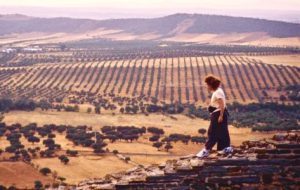Destination Stewardship Report – Winter 2022 (Volume 2, Issue 3)
This post is from the Destination Stewardship Report (Winter 2022, Volume 2, Issue 3), an e-quarterly publication that provides practical information and insights useful to anyone whose work or interests involve improving destination stewardship in a post-pandemic world.
OPINION: The NY Times’s Selection of Sustainable Destinations
This year, The New York Times Travel section devoted its annual list of recommended destinations to places “where travelers can be part of the solution” – a sustainability first that recognizes the interactions between tourist and destination. How did the Times do? DSR editor Jonathan Tourtellot does a quick review of the editors’ choices.
The New York Times Chooses 52 Good-Stewardship Destinations
“Did you have something to do with this?” My friend’s message contained a link to the New York Times’s annual list of 52 places to visit. It’s issued every January, only this year the newspaper’s list could have been wrapped in recycled brown paper and tied up with biodegradable string: “52 Places for a Changed World,” announced the venerable Times, where tourism can help with problems “like overtourism and climate change.”
No, not me, I replied – erroneously, it turned out – “but great that they’re doing this.” The 2022 list, says the Times, “highlights places where change is actually happening — where endangered wild lands are being preserved, threatened species are being protected, historical wrongs are being acknowledged, fragile communities are being bolstered” – all with tourism somehow helping.
Here’s the list.

Source: New York Times.
Let’s take a look at a few of the choices.
Some selections were listed mainly as overtourism alternatives: visit Gouda, not Amsterdam, in the Netherlands; Chioggia, not Venice, in Italy. Other destinations have enacted careful limits to avoid overtourism in the first place, such as Islas Cíes in Spain.
Estes Park, Colorado, USA earned a mention for adaption to climate change, and Normandy’s bike trail for not adding to it.

The design of the Fogo Island Inn reflects the traditional fishing piers of Newfoundland. Photo: Jonathan Tourtellot
Some places are using tourism to help preserve or restore traditional societies disrupted by external factors, as with the Bedouins of Egypt’s Red Sea Mountain Trail and the culturally distinct villagers of Vietnam’s Red River Delta. On Fogo Island, Newfoundland, that monument to fishing-village heritage, The Fogo Island Inn, helped reverse the island’s cod-moratorium decline.
In some places, entrepreneurial initiatives to empower women rely on tourism – Marrakech, Morocco (improved crafts and culinary skills) and the mountains of Uttarakhand, India (homestays provided by widows).
For indigenous management of protected areas – a welcome trend – we have Daintree Rainforest in Queensland, Australia and Thaidene Nëné National Park, on Canada’s Great Slave Lake.

African wildlife survival depends on tourism. Photo: Jonathan Tourtellot
Mozambique’s new Chimanimani National Park and the entire country of South Africa basically represent the parks and conservation areas of all Africa that need tourism to return; lack of it has put wildlife at risk from poaching, agricultural pressures, cattle grazing, and other threats during Covid.
Tourism also helps conservation recovery in Puerto Rico’s hurricane-battered El Yunque National Forest; Greenland and Saguaro National Park, Arizona, USA, both welcome “voluntourists” for planting trees and pulling up invasive grasses respectively.
Only a few seemed a thematic stretch. Some places appeared to be listed simply because they’re doing a good job of stewardship, tourism notwithstanding – Monaco and El Hierro in the Canary Islands, for instance. Places like Northumberland, U.K. and Santa Cruz county, California, USA seemed merely nice places to go, with just a modicum of preservation and conservation noted.
It turns out that I did have something to do with the list, and so quite likely, did you readers, either directly or indirectly. While reviewing old emails, I discovered one I had forgotten: Back in October of 2021, I had answered a request from the New York Times, relayed via my colleagues at CREST, asking for ideas for a new approach to their annual list: aspects of destination stewardship.

Saguaro National Park, Arizona, needs volunteers. Photo: Jonathan Tourtellot
Quite a few subscribers to the Destination Stewardship Report may have received the same call. Even if you didn’t, all of us in this community deserve a nod for bringing a new way of thinking increasingly into the realm of conventional travel reporting.

Portugal’s Alantejo wine region was among those chosen for sustainable food and drink. Photo: Jonathan Tourtellot
This is good. We’re not only being heard; we’re being consulted by mainstream media. To be sure, the NYT has covered sustainable tourism before, but not to my knowledge in such an elaborate panorama directed right at the traveler. Tourism policymakers take notice. The more that sustainable tourism shows up in mass media, the sooner governments, tourism boards, and alert citizens will start accepting and then encouraging it.
The need, however, is urgent. Threats to destinations continue. The organizations and individuals who subscribe to this Report, or who have signed on to the Future of Tourism Coalition’s Guiding Principles, would do well to boost our outreach to mass media. We need to build relationships with more editors and producers, with more reporters and influencers. We need to look beyond our silos and inject our points of view into the mainstream news cycle – to become the point of referral whenever an issue of destination stewardship arises, stressing that tourism is an integral part of the places where it occurs, and must be managed so as to help and not hurt.
About the Author
Jonathan Tourtellot – CEO, Destination Stewardship Center; Editor, Destination Stewardship Report; Principal, Focus on Places LLC; founding Director, former Nat Geo Center for Sustainable Destinations




